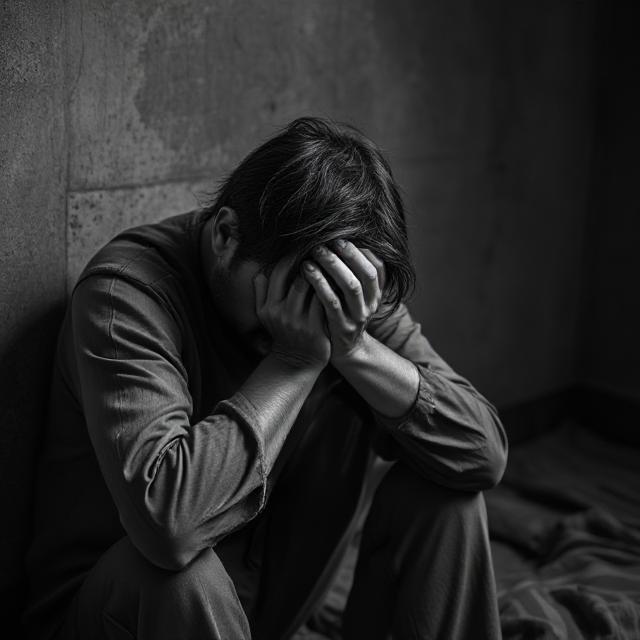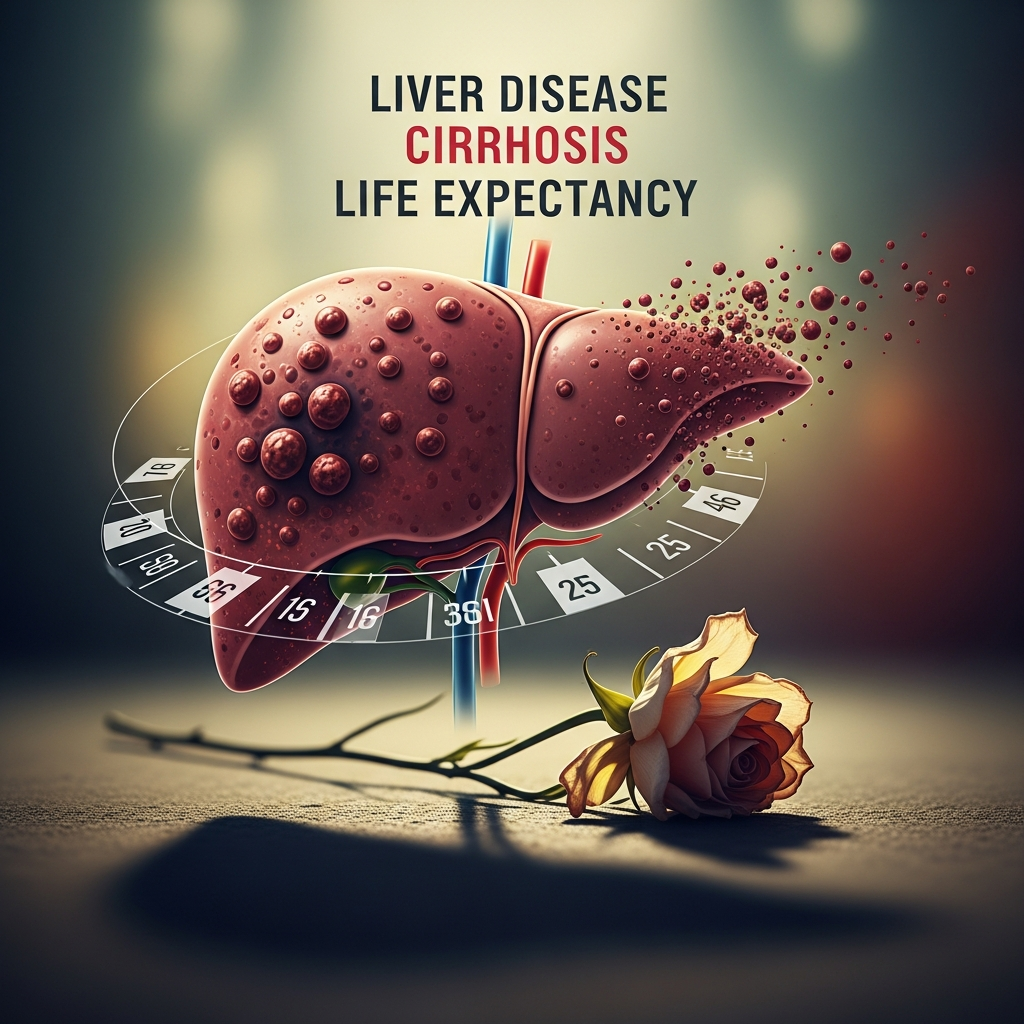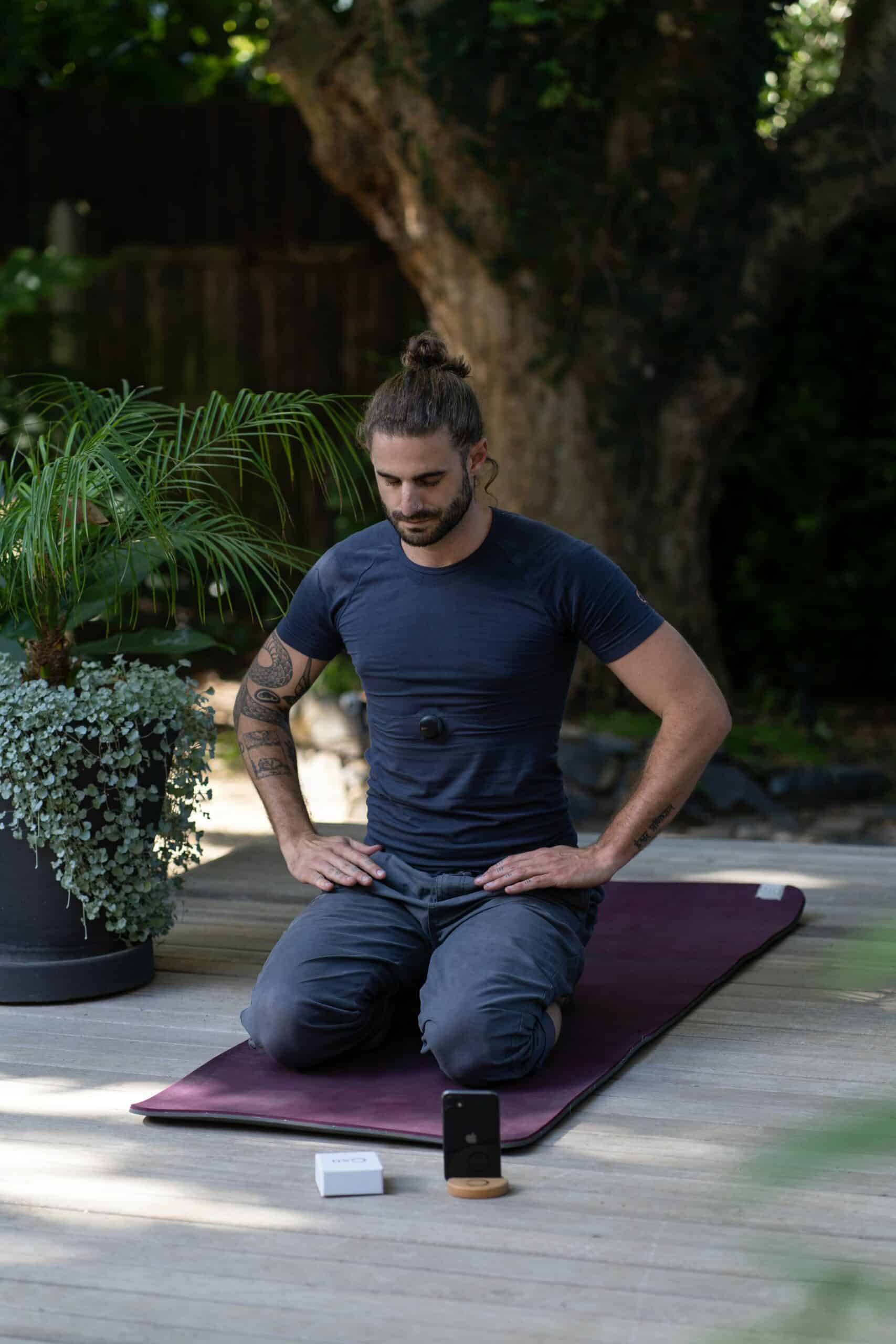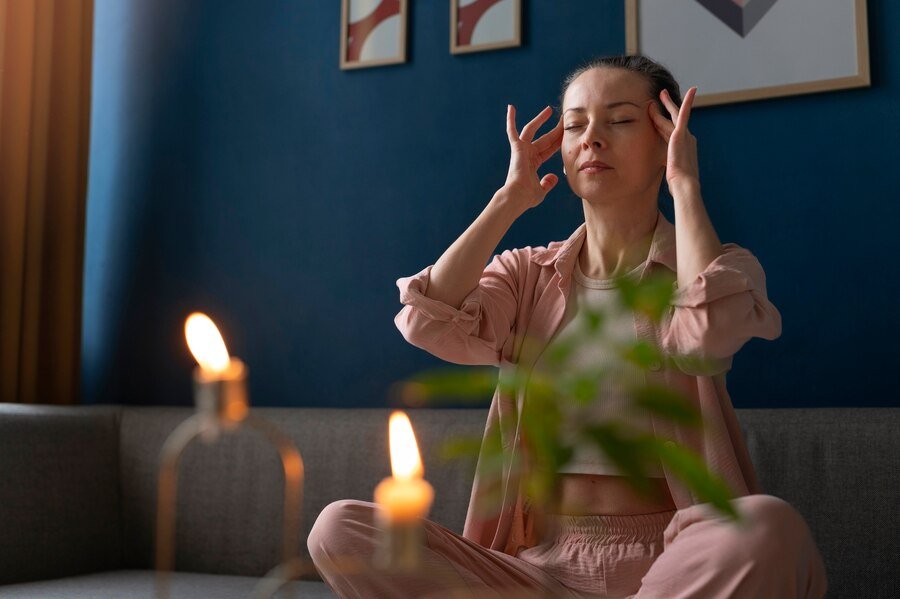
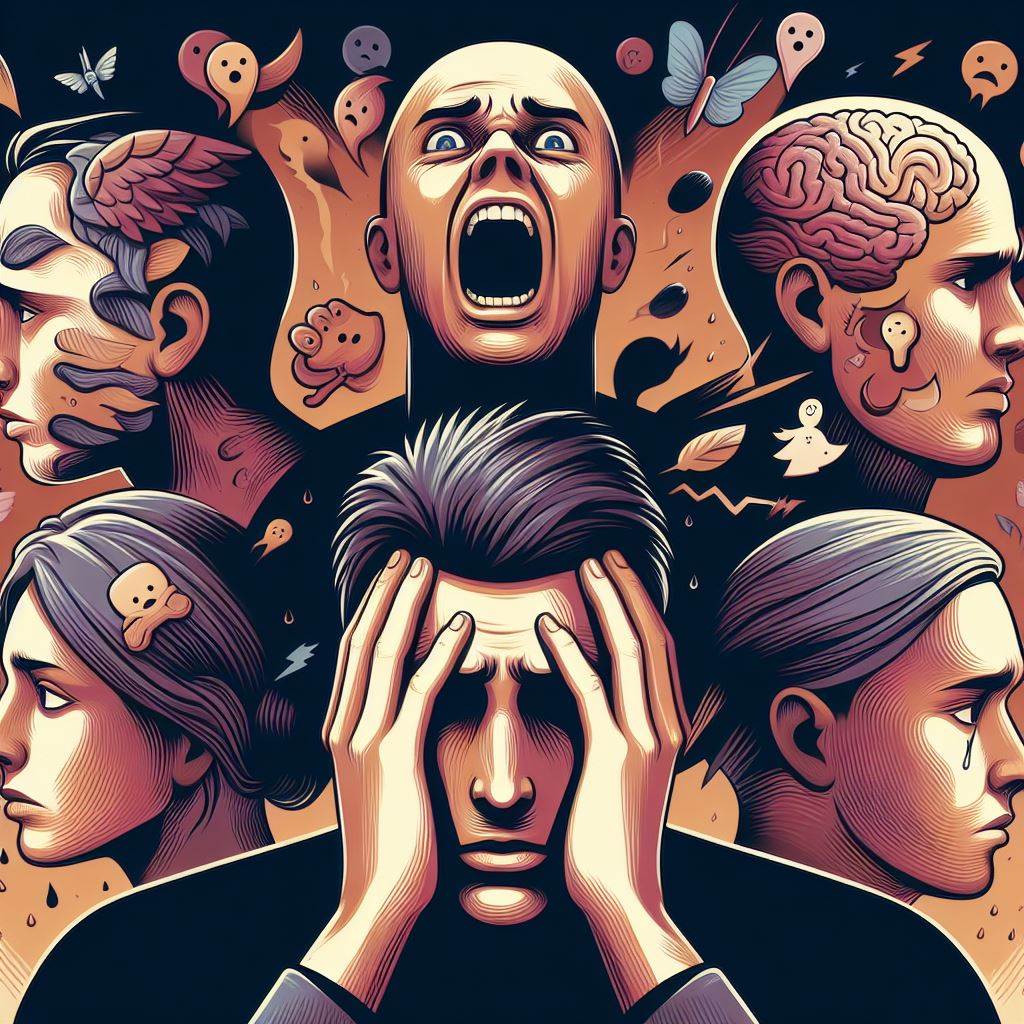

Introduction
We have to share 4 main types of anxiety disorders, On this blog post, we will discuss the causes and treatment for these diseases. The feeling of anxiety is a normal and healthy emotion that helps us cope with situations when we feel stressed, threatened or uncertain. Anxiety is extremely common, but its severity can be detrimental to our well being and ability to function day-to-day when it becomes excessive, persistent, or irrational.
Anxiety disorders or depression and anxiety :There are 264 million people around the world who are affected by some form of anxiety disorders, according to the World Health Organization, so they make up the majority of people with anxiety disorders. There is no age, gender, culture, or background that is safe from the effects of anxiety disorders, they can affect anyone.
A wide variety of anxiety disorders exist, each with its unique symptoms, causes, and treatments, each having its own effect on the sufferer. In this article, we will examine some of the most common eye issues and how you can treat them in order to prevent future problems.
The following are 4 main types of anxiety disorders.
1. The Generalized Anxiety Disorder(GAD) is one of the types of anxiety disorders:

Generalized anxiety disorder (GAD) : The symptoms of 4 main types of anxiety disorders
In general, generalized anxiety disorder (GAD) is characterized by a chronic and excessive worry about a wide range of life factors, such as health, work, family, and finances. In addition to having difficulties controlling their anxiety, GAD patients often suffer from physical symptoms such as restlessness, fatigue, muscle tension, irritability, and difficulty concentrating.
Although gad is not well understood to have a specific cause, but it has been demonstrated that it could be covered by the act of genetics, biology, psychology, and environmental factors, the following are some of these factors:
- There is a family history of anxiety or mental illness in the family.
- A neurotic personality trait, as the name suggests, means that one is prone to negative emotions and stress as a result of one’s thinking.
- When experiencing stressful or traumatic events in life, such as abuse, violence, loss or illness, you might experience trauma and stress.
- Other medical conditions that may also be present with thyroid problems, heart disease, or diabetes in addition to thyroid disease, heart disease, or diabetes.
- Alcohol, caffeine, and drugs are some of the substances that people abuse and use excessively.
2. The panic disorder:
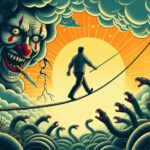
Panic disorder is one of the 4 main types of anxiety disorders. An individual with panic disorder has recurrent and unplanned panic attacks, which are sudden, intense bouts of fear and discomfort lasting a few minutes, and they are characterized by recurring and unplanned panic attacks. You can feel the heat pounding, racing, or palpitating through your body.
- There is a feeling of sweating, trembling, or shaking in the body.
- You may feel choking, shortness of breath, or experience chest pain as a result of this condition.
- It is possible to experience nausea, dizziness, or fainting symptoms during this time.
- A woman who is going through menopause can experience numbness, chills, and hot flashes.
- When you do not pay attention to what is happening, there is a fear of losing control, going crazy, or even dying.Panic attack :An individual with panic disorder often worries they will have another attack, and as a result, avoids situations and places that could trigger them by having a panic attack again. An individual who experiences a panic attack does not necessarily develop panic disorder as a result of that attack. As a result of agoraphobia, which is a fear of public places and open areas where escape or help may be difficult or embarrassing, an individual with agoraphobia may have severe difficulties functioning normally and living a meaningful life. It can severely restrict the life of an individual with agoraphobia.
The cause of 4 main types of anxiety disorders. ,Panic disorder has many risks associated with it, including genetic, biological, psychological, and environmental factors, all of which contribute to the disorder’s development.
- There is a family history of panic disorder or another anxiety disorder in the family.
- Stress and negative emotions can trigger a temperament that is highly sensitive
- Stressful or traumatic life events, such as abuse, violence, loss, or illness, can have a profound impact on a person’s life.
- You may be asthmatic, suffer from heart disease, or have thyroid issues if you have any of these conditions.
- Substance abuse, including the use of alcohol, caffeine, and drugs, may lead to health problems
3. The Social Anxiety Disorder :
Social Anxiety Disorder is one among the 4 main types of anxiety disorders.
lass=”yoast-text-mark” />>During social or performance situations, social anxiety disorder is characterized by a persistent and intense sense of being monitored and judged by others, as well as a feeling of being judged and watched. It has been observed that people with social anxiety disorder may feel overwhelmed by their fear of social situations, preventing them from being able to cope with them in a healthy manner. There are some people who are unable to work, attend school, or do everyday tasks due to this fear, which can interfere with their ability to function. There are a number of symptoms associated with these conditions, such as:
- A sense of self-consciousness or the fear that others will judge you negatively.
- You may feel trembling, blushing, or sweating.
- There is a pounding or racing sensation in the heart.
- There may be stomachaches, nausea, or diarrhea that you experience.
- It is important to maintain a rigid posture when speaking or to talk too softly when speaking.
- There is a difficulty in making eye contact with people who are unfamiliar to them or being around strangers
Main types of anxiety disorders: A social anxiety disorder is an anxiety disorder that is caused by genetic, biological, and psychological factors. In order to reduce the risk, the following factors need to be considered.
- Anxiety disorders, There are some disorders that run in your family, such as social anxiety disorder.
- Feeling uncomfortable around unfamiliar people, environments, or situations is a characteristic of shyness or behavioral inhibition.
- Negative experiences with bullying, criticism, humiliation, or reflection.
- Other mental health conditions may also affect them, such as depression, eating disorders, and substance abuse.
- Physical conditions that draw attention include shuttering, tremors, and facial disfigurements.
4. The Phobia-Related Disorders;
Phobia disorders :Phobia related disorders are one among the 4 main types of anxiety disorders.
One of the most common and diverse types of phobia related disorders is a specific phobia, which is a fear of certain things or situations, such as animals, heights, blood, or flying, which are among the many different types of phobias.
Social anxiety disorder: <strong>
There is a possibility that anxiety associated with social and performance situations can cause significant distress and impairment, such as speaking, eating, meeting new people, etc.
Agoraphobia: The fear that one might not be able to extricate himself or herself from a situation if something goes wrong, or if help might not be readily available in an emergency. When a person is suffering from agoraphobia, he or she may avoid public places and crowds, transportation, and being alone outside the home.
Through cognitive behavioral therapy (CBT), individuals learn coping skills and exposure techniques that will help them cope with their fears. By using cognitive behavioral therapy, people are able to challenge their negative beliefs and thoughts that fuel their anxiety and change them.
Anxiety Treatment:
Treatment of 4 main types of anxiety disorders. Antidepressants can be effective in reducing the frequency and intensity of panic attacks, however, they can also lead to a number of side effects, which include nausea, weight gain, sexual dysfunction, and suicidal thoughts, as well as other adverse effects. Depending on the severity of the condition, the effects may last up to several weeks.
Psychotherapy can help people with 4 main types of anxiety disorders Understanding the causes and triggers of their panic attacks and having coping skills and strategies to cope with them are the keys to successfully managing them. Among the most effective methods of treating a variety of diseases is psychotherapy
Cognitive-behavioral therapy (CBT) is one of the most effective treatments for panic disorder. There are different forms of CBT, but generally it involves a form of talk therapy that helps people change their negative thoughts and beliefs that lead to panic attacks in order to replace them with more realistic and positive thoughts and beliefs. Among other things, CBT teaches people how to relax their body and mind, face their fears, and gradually expose themselves to situations or places that cause them anxiety as a result of the behavior. To come out these problems weight loss is very essential.
You Also Read
- 15 Effective Ways To Lower Your Cancer Risk
- 3 Top Risk Factors of Fibrodysplasia Ossificans Progressiva in Newborn
- 22 Natural Remedies for Anxiety: What Really Works?
- 7 Natural Ways to Reduce Anxiety and Stress Daily: A Comprehensive Guide
- How to Overcome Social Anxiety Disorder Tips
- Home
- Category Mind & Mood Care







